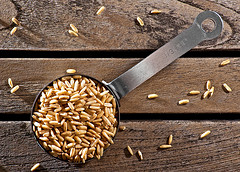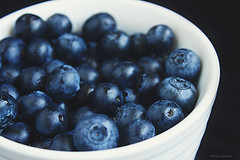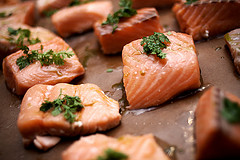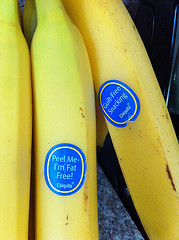 One of every eight children suffers from an anxiety disorder, according to the Anxiety and Depression Association of America. In fact, the National Institute of Mental Health state that anxiety disorders affect 18% of the population, making it the most common mental health issue in the U.S.
One of every eight children suffers from an anxiety disorder, according to the Anxiety and Depression Association of America. In fact, the National Institute of Mental Health state that anxiety disorders affect 18% of the population, making it the most common mental health issue in the U.S.
But regardless of how common anxiety disorders may be, for the parents of children who suffer from them, dealing with anxiety represents a daily struggle. Fortunately, recent scientific studies show that nutrition can have a significant impact on anxiety.
Managing your child’s anxiety through diet changes in addition to using a structured program such as what we offer here, offers a number of advantages. Focusing on healthy eating choices leads to better overall health. Nutritional changes don’t have the worrisome side effects that many medications cause. Plus, it’s a gentle and relatively simple lifestyle change that’s easy on both children and parents.
Stabilize Blood Sugar
 A number of studies suggest a correlation between the consumption of refined sugar and anxiety symptoms. Research from Yale University indicates that when children ingest certain types of sugar, they experience a 10-fold increase in adrenalin levels; adrenalin, also known as epinephrine, is a hormone released by the body when it feels stressed or threatened.
A number of studies suggest a correlation between the consumption of refined sugar and anxiety symptoms. Research from Yale University indicates that when children ingest certain types of sugar, they experience a 10-fold increase in adrenalin levels; adrenalin, also known as epinephrine, is a hormone released by the body when it feels stressed or threatened.
These elevated adrenalin levels lead to feelings of irritability, crankiness, and anxiety, according to Yale University’s Dr. William Tamborlane. But which types of sugar can exacerbate anxiety?
Sugars – also known as carbohydrates – are naturally occurring substances that occur in almost everything we eat. Sugars are classified as simple or complex; complex sugars provide nutrients and occur in foods like fruits and vegetables. In contrast, simple sugars just provide empty calories and are found in foods that contain refined sugar, high fructose corn syrup, and most processed foods.
When simple sugars hit the blood stream, glucose levels skyrocket, creating a short burst of energy. Soon after, glucose levels crash, creating a condition known as hypoglycemia, with symptoms such as dizziness, insomnia, irritability and anxiety. Roller coaster glucose levels result in uneven hormonal levels, like adrenalin and cortisol, which exacerbate the anxious feelings.
Help your child avoid these symptoms by keeping blood sugar levels stable; provide small-portioned meals at regular intervals throughout the day, interspersed with healthy snacks. Avoid simple sugars such as those found in:
- Candy, sodas and sugary drinks
- Processed foods
- Hugh fructose corn syrup, table sugar, brown sugar, honey and sugar substitutes such as aspartame
- White bread, pasta and rice
- Certain fruits, such as bananas, raisins, pineapples and mangoes
Be sure to read labels carefully, as simple sugars are often found in unexpected places.
Instead, choose healthy, complex carbohydrates such as those found in:
- Whole grain breads, pastas and cereals
- Brown rice
- Vegetables
- Legumes and nuts
- Fruits like citrus, apples, pears and watermelon
Complex carbohydrates offer other benefits, as well: According the Mayo Clinic, foods containing complex carbohydrates are thought to increase the amount of serotonin the brain produces, a neurotransmitter that has a calming effect that helps soothe anxiety symptoms.
Optimize Magnesium Levels
 Most of us don’t get enough magnesium in our diets; according to Dr. Emily Deans, the average intake is about 250 mg per day, but the current RDA is between 350 and 420 mg for adults. This mineral not only plays a role in helping cells create energy – it may also be a component in alleviating and preventing anxiety symptoms.
Most of us don’t get enough magnesium in our diets; according to Dr. Emily Deans, the average intake is about 250 mg per day, but the current RDA is between 350 and 420 mg for adults. This mineral not only plays a role in helping cells create energy – it may also be a component in alleviating and preventing anxiety symptoms.
Recent studies published in “Neuropharmacology” and the “Australian and New Zealand Journal of Psychiatry” found links between magnesium deficiency and higher risk of anxiety and depression, while studies in “Current Medical Research and Opinion” and “Nutritional Journal” point to magnesium’s potential to alleviate anxiety symptoms.
Scientists think that magnesium acts as a gatekeeper within the brain, protecting certain receptors from getting too worked up. Magnesium also regulates the production of stress hormones and, in some instances, seems to protect the brain from depression after traumatic injury.
Luckily, magnesium is found in some of the same, complex-carbohydrate-rich foods that help regulate blood sugar levels. To add magnesium to your child’s diet, include foods such as:
- Whole grains, like oats, quinoa and buckwheat
- Seeds, nuts and legumes
- Leafy green vegetables, like chard, spinach, collard greens and kale
- Beef, chicken and fish and stock made from bones
- Herbs like chamomile, peppermint, sage, parsley and nettles
- Spices like fennel seed, cayenne, paprika and fenugreek
Support Neural Growth and Development with Polyphenols
 When healthy, brains continue to grow and develop new neurons across the human lifespan – but factors like stress, depression and anxiety can hinder that growth. People suffering from chronic stress and anxiety tend to have reduced rates of brain cell regeneration, as well as a reduction in cognitive abilities.
When healthy, brains continue to grow and develop new neurons across the human lifespan – but factors like stress, depression and anxiety can hinder that growth. People suffering from chronic stress and anxiety tend to have reduced rates of brain cell regeneration, as well as a reduction in cognitive abilities.
Fortunately, a study in “Oxidative Medicine and Cellular Longevity” suggests that the consumption of dietary polyphenols – or naturally occurring substances found in some plants — can alleviate the symptoms and effects of anxiety and depression. Scientists believe that polyphenols work by reducing the biochemical changes that stress and anxiety hormones produce in nerve cells.
It’s easy to add more polyphenols to your child’s diet. They’re found in a range of colorful fruits, vegetables, nuts and legumes, including:
- Berries such as blueberries, strawberries, blackberries and raspberries
- Fruits such as plums, cherries, apples and pomegranates
- Vegetables such as artichokes, spinach and broccoli
- Flaxseed, chestnuts, hazelnuts
- Black beans
Soy yogurt, soy milk and black olives also contain polyphenols.
Repair Neural Damage with Omega 3 Fatty Acids
 You may have heard of the many disease-prevention benefits of Omega-3 fatty acids, but these nutritional powerhouses also provide anti-inflammatory benefits to the brain. A 2006 meta-study in the Journal of Clinic Psychiatry concluded that omega-3 fatty acids have a protective effect on the brain.
You may have heard of the many disease-prevention benefits of Omega-3 fatty acids, but these nutritional powerhouses also provide anti-inflammatory benefits to the brain. A 2006 meta-study in the Journal of Clinic Psychiatry concluded that omega-3 fatty acids have a protective effect on the brain.
There are two types of omega-3 fatty acids: DHA and EPA. While both play important roles in brain health, EPA has a specific anti-inflammatory effect – and the brain has a limited lifetime supply of EPA, according to Dr. Barry Sears.
To complicate matters, diets that contain high levels of omega-6 fatty acids, found in vegetable oils, meat and egg yolks, can interfere with omega-3 fatty acids’ anti-inflammatory properties. Cutting back on the consumption of vegetable oil and refined, processed foods can help the body process EPA more efficiently.
The good news is that you can add EPA to the diet through foods such as:
- Flaxseeds and flaxseed oil
- Fatty fish and seafood such as salmon, cod, sardines, halibut, shrimp and scallops
- Soybeans, tofu and miso
- Walnuts
- Leafy greens like kale, collard greens, spinach, romaine lettuce
- Vegetables like winter squash, Brussels sprouts and green beans
- Fruits like strawberries and raspberries
Reduce Cortisol and Stress Hormones
 When the human body experiences stress, it releases a hormone called cortisol. In a traumatic situation, cortisol actually helps return the body to its pre-stressed state.
When the human body experiences stress, it releases a hormone called cortisol. In a traumatic situation, cortisol actually helps return the body to its pre-stressed state.
But for those suffering from anxiety, cortisol levels remain high for extended periods, causing blood sugar and insulin levels to spike, then crash. This, in turn, sends panic signals to the brain, which then produces adrenalin… which causes feelings of anxiety and stress… and the vicious cycle continues.
Over time, an imbalance of cortisol and other stress hormones may lead to an increased appetite, weight gain, water retention, and an addiction-like dependency on sugars, not to mention more anxiety.
Though there’s no dietary “cure” for elevated cortisol, certain foods can trigger its release. These include:
- Processed foods packed with refined sugars
- Simple carbohydrates like white bread, rice and pasta
Children suffering from anxiety should also avoid another significant cortisol trigger: Caffeine. Multiple studies have suggested a link between caffeine intake and elevated cortisol levels.
Caffeine acts as a stimulant in the brain; for many, caffeine causes feelings of restlessness, agitation, fear, nervousness or insomnia. But for those suffering from anxiety, caffeine’s side effects tend to be even more pronounced.
To make matters worse, when children consume caffeine, it’s usually in the form of soda or other sugary drinks, adding blood sugar spikes and crashes to the mix. Provide your children with healthy alternatives to soda and energy drinks, whether it’s 100% fruit juice or water, to avoid caffeine’s many negative affects.
Regulate Neurotransmitters
 Though anxiety has a number of different triggers, some children with anxiety have unusually low levels of gamma-aminobutyric acid or GABA, a neurotransmitter that has a calming effect. Also known as the brain’s “peacemaker,” this amino acid is naturally produced in the body. However, when levels become low or imbalanced, anxiety, stress, insomnia and depression can result.
Though anxiety has a number of different triggers, some children with anxiety have unusually low levels of gamma-aminobutyric acid or GABA, a neurotransmitter that has a calming effect. Also known as the brain’s “peacemaker,” this amino acid is naturally produced in the body. However, when levels become low or imbalanced, anxiety, stress, insomnia and depression can result.
Low or imbalanced GABA levels may be caused by:
- Deficiencies of vitamin B1 and B6, iron, manganese or zinc
- Insufficient sleep
- Chronic pain
- Chronic stress
- Excessive consumption of caffeine
- Exposure to lead or mercury
A study in “Biological Psychiatry” found that when people experience feelings of fear, the number of GABA receptors in their brain decrease. When the fear goes away, receptors increase, allowing the brain to take up more GABA.
To add more GABA to your child’s diet, consider GABA-rich foods such as:
- Yogurt and cheeses like parmesan, edam, gouda, provolone and cheddar
- Soy beans, soy flour and tofu
- Almonds, Spanish peanuts and lentils
- Bananas and citrus fruits
- Broccoli and spinach
- Brown rice, oatmeal, rice brain, wheat germ and other whole grains
- Halibut and organ meats
Before making any drastic changes in your child’s diet, be sure to speak with a healthcare provider to get a green light. When you do begin to incorporate new foods and cut anxiety triggers out of the menu, make the changes gradually, so as not to add stress to your already anxious child’s life.
Don’t expect overnight results; it may take a while for these dietary changes to kick in. Keeping a food journal that records what your child ate and their anxiety symptoms may help you to notice progress, even if it’s incremental at first.
Photo Credit: Bob.Fornal, maira.gall, djwtwo, kozumel, the JoshMeister, The Master Shake Signal





